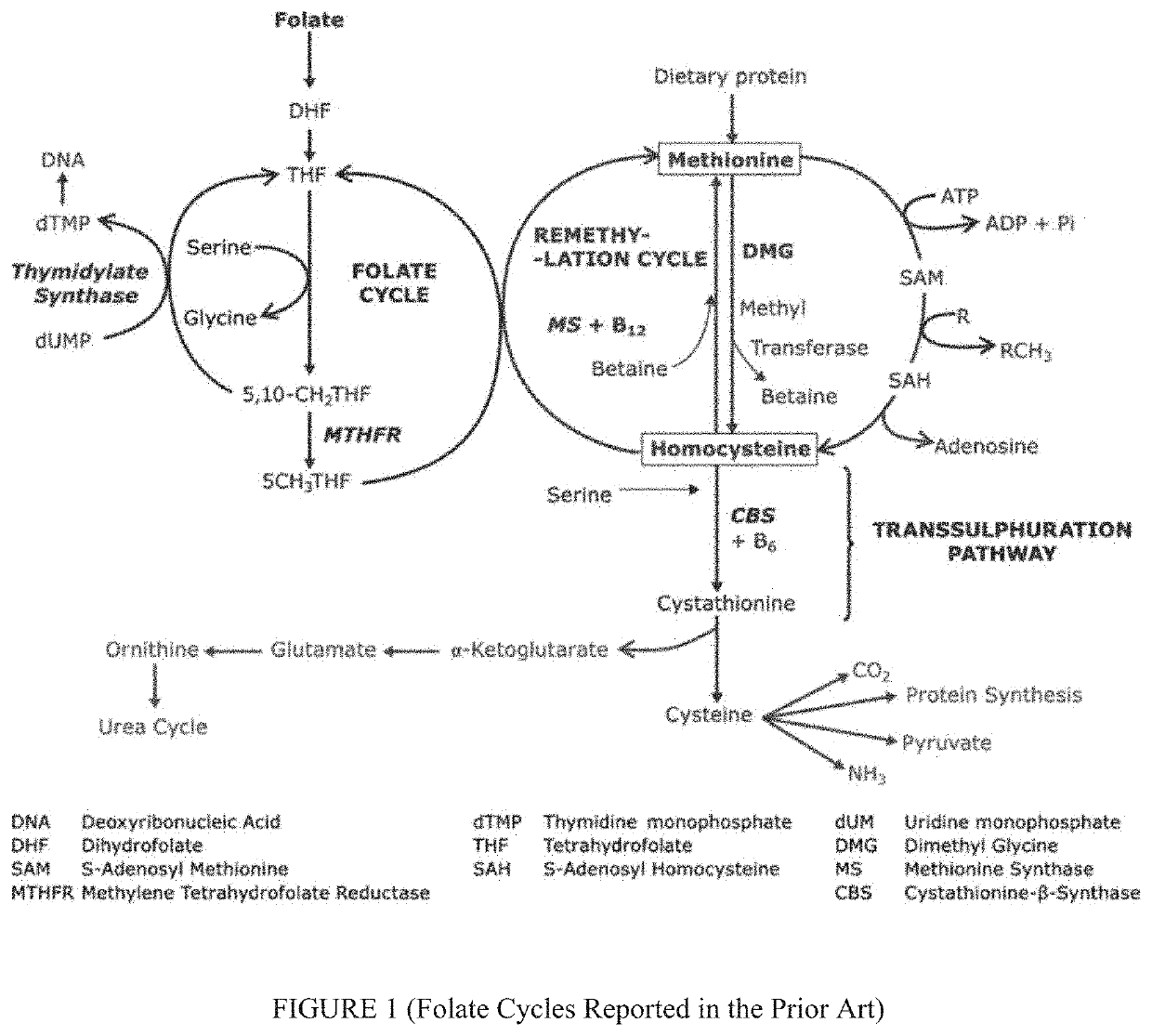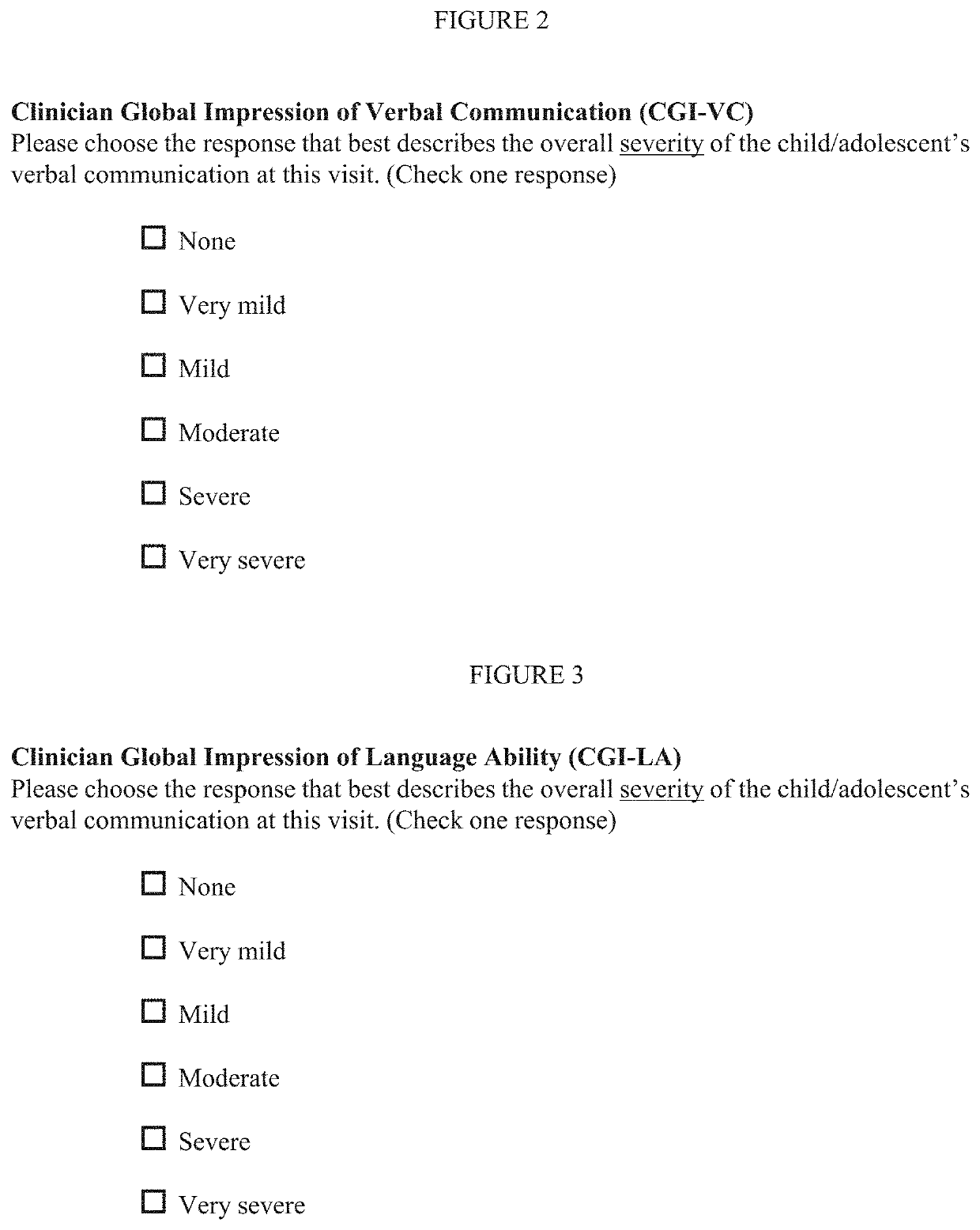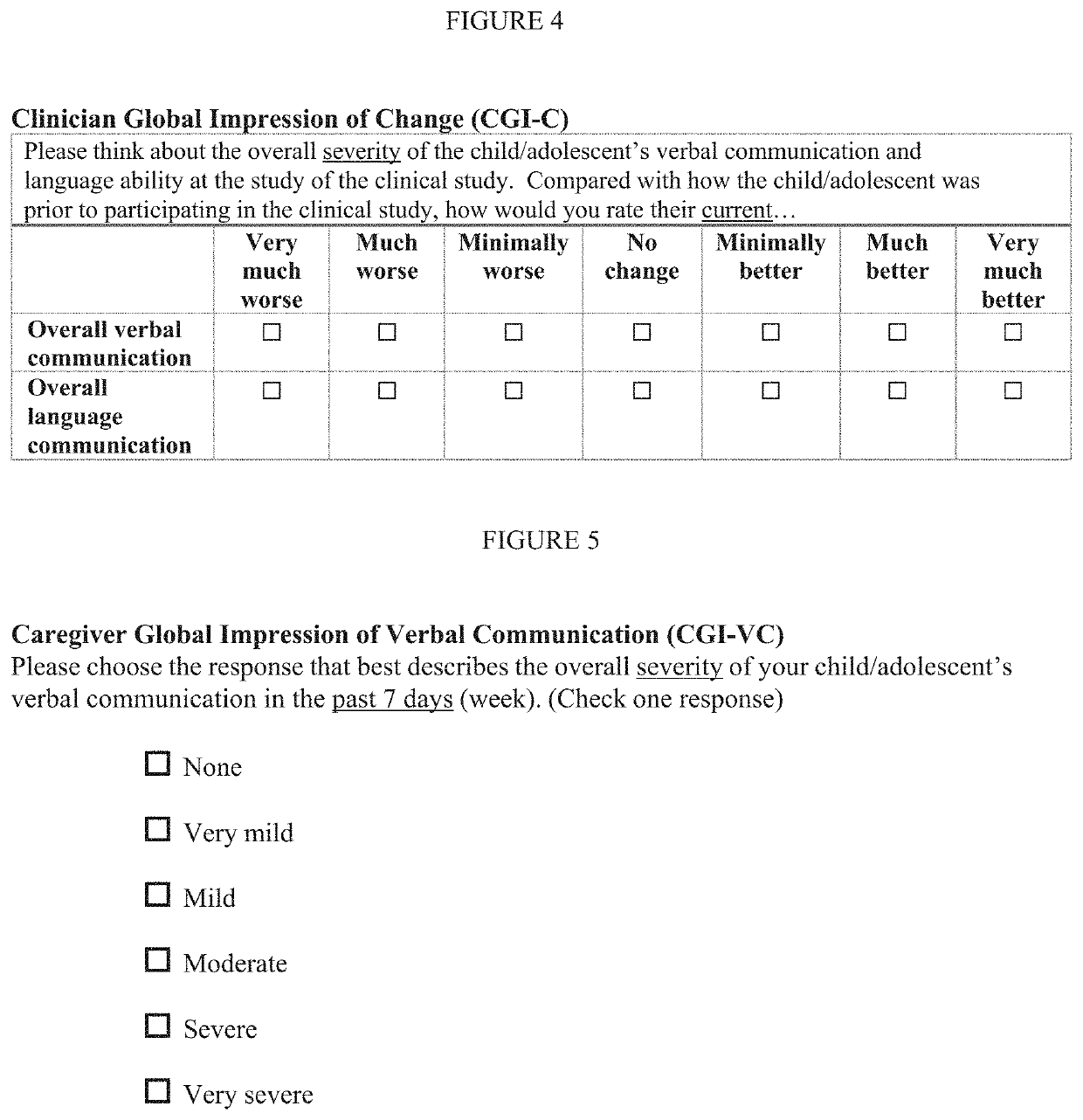Treatment of CNS and developmental disorders using high dose 5-formyl-(6S)-tetrahydrofolate
a technology of cns and tetrahydrofolate, which is applied in the field of treatment of developmental disorders and chronic disorders of the cerebral nervous system (cns), can solve the problems affecting the synthesis of cns, so as to improve the synthesis rate of cns, the effect of reducing the number of cns
- Summary
- Abstract
- Description
- Claims
- Application Information
AI Technical Summary
Benefits of technology
Problems solved by technology
Method used
Image
Examples
example 1
of Folate Absorption Following High Dose Oral Administration of Different Folates
[0125]For this study, 4 mg / kg folate was administered as a single dose to 250-300 g male Wistar rats. Folates studied were folic acid (“PGA”), 5-methyl-(6S)-THF, folinic acid, and 5-formyl-(6S)-tetrahydrofolate. For each form of folate 4 time points of 30 min, 1 h, 2 h and 4 h were evaluated. For each time point 2 rats were used. The folate form dissolved in 0.5 ml buffered saline was administered orally using a blunt needle attached to a 1 ml syringe. The rats were euthanized by CO2 inhalation.
[0126]Blood was drawn cardiac puncture, allowed to clot for 30 min, serum separated, diluted in equal volume of 4% ascorbate pH 7.2 and kept frozen at −20 C. Folate forms in the serum was determined by HPLC and the peaks were quantified by comparing to known standards as described below.
[0127]Folate standards (5-MTHF, FA, THF and Formyl-THF) and 13C-labeled stable isotope internal standards (13C5-5-MTHF, 13C5-FA ...
example 2
stribution of Folates 24 H Post Oral Administration of Various Folate Forms
[0135]This study evaluated the difference in folate absorption in non-pregnant rats, pregnant rats, pregnant rats injected with a control antibody, and pregnant rats injected with antibody to the folate receptor alpha. Eight (8) rats were assigned to each group for a total of thirty-two (32) rats. Two rats within each group were administered a single oral dose of PGA, 5-methyl-(6S)-THF, folinic acid or 5-formyl-(6S)-THF as a liquid solution and sacrificed at 24-hours to evaluate folate absorption patterns. The total amount of each form of folate administered to each rat was 4 mg / kg.
[0136]Serum was withdrawn immediately before the rat was sacrificed. For extraction of folate from serum, an aliquot of the serum was diluted in 3 volumes of phosphate buffer pH 5.5, placed in a boiling water bath for 10 min, cooled, the protein precipitate separated by centrifugation and the clear supernatant was assayed for folat...
example 3
stribution of Folates 24 H Following Oral Administration of Various Folate Forms to Rat Pups
[0142]To determine tissue distribution of orally administered folate forms in young rat pups and study the effect of folate receptor antibodies on this distribution. PND 21 rat pups weighing about 50 g were administered folate forms orally at a dose of 4 mg / kg. Animals were euthanized after 24 h and tissues collected for analyzing total methylfolate in each tissue to provide a measure of normal distribution. Additional pups were administered FR Ab (100 ug) IP; 24 h prior to oral administration of folate forms to determine if FR Ab would affect tissue uptake of folates and to identify the form of folate most effective in restoring brain uptake in the presence of FR Ab.
[0143]Results are reported in Table 3a.
TABLE 3aFolate (ng / mg) (mean)CodeConditionLiverKidneyCerebellumCerebrumAAcontrol124.546.110.94.0ABPGA149.573.538.46.6ABbPGA + FRAb159.866.820.78.3AC5 methyl158.586.626.14.3ACb5 methyl + FRAb...
PUM
| Property | Measurement | Unit |
|---|---|---|
| concentration | aaaaa | aaaaa |
| concentration | aaaaa | aaaaa |
| time | aaaaa | aaaaa |
Abstract
Description
Claims
Application Information
 Login to View More
Login to View More - R&D
- Intellectual Property
- Life Sciences
- Materials
- Tech Scout
- Unparalleled Data Quality
- Higher Quality Content
- 60% Fewer Hallucinations
Browse by: Latest US Patents, China's latest patents, Technical Efficacy Thesaurus, Application Domain, Technology Topic, Popular Technical Reports.
© 2025 PatSnap. All rights reserved.Legal|Privacy policy|Modern Slavery Act Transparency Statement|Sitemap|About US| Contact US: help@patsnap.com



